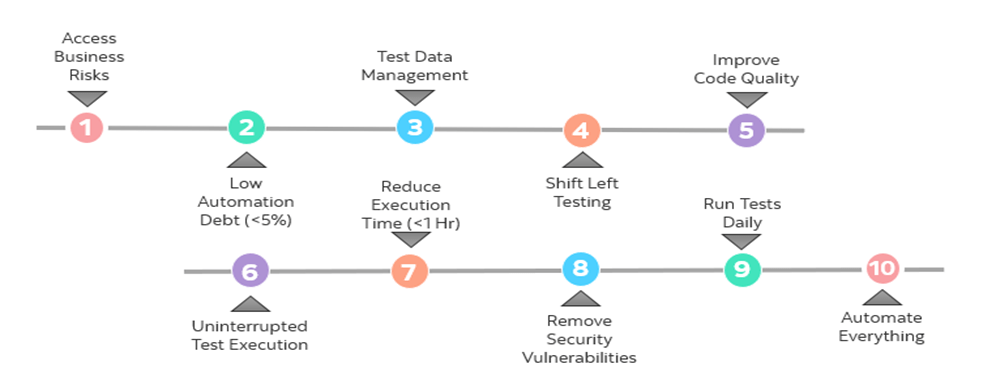In the previous article “There’s more to Continuous Testing than Automating your tests!”, I suggested what else test teams should be looking at in addition to automating their functional tests using their vanilla test automation framework to be successful at continuous testing. While that’s the ideal end-state that every team would like to be, I got several questions from automation engineers on where and how do they can start this journey. I will try to demystify the process in this article by giving a brief checklist of critical things that teams can check and incorporate into your test automation for a jump start.

| 01 | Evaluate your test suites along with your engineering and product teams to ensure that they cover all critical business areas, risks, and user experience. It is very important to get all the stakeholders in sync. |
| 02 | Stay on top of the progressive automation of new features added every sprint, keep the automation and technical debt as low as possible (<5%) at any time. |
| 03 | Introduce Automated test data management using either static or dynamic methods to identify, generate, refresh, and manage data. |
| 04 | If all your tests are at front-end UI, then its time to re-evaluate your test strategy to shift left your testing to include unit, component, and integration tests as well. |
| 05 | Commit related changes often to a central repository such as Git, measure, and improve code quality using static code analysis tools like SonarQube. |
| 06 | Enable uninterrupted test execution by removing manual interventions, ability to take run-time parameters to run tests in any known environment. |
| 07 | Optimize the automated scripts to reduce the total execution time (<1 Hr). Enable concurrent test runs wherever possible. |
| 08 | Remove security vulnerabilities by scanning every piece of code including tools, framework, dependencies, and test automation code using tools like HP Fortify. |
| 09 | If running on a pre-defined schedule, run tests at least daily or multiple times per day. If connected to the CI-CD pipeline, run the tests for every build and deployment. |
| 10 | Introduce automation in all possible avenues starting from test case creation, test script generation and script maintenance, bug analysis, and reporting. |
You can leave your comments here or on Twitter @testingchief. Read more about other software testing blogs here.











